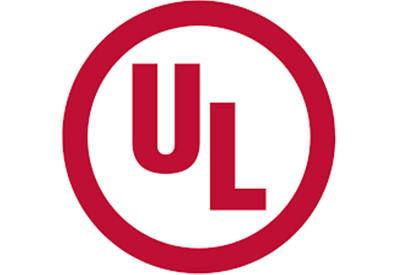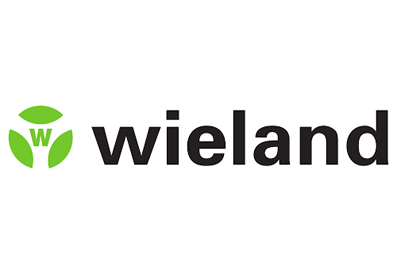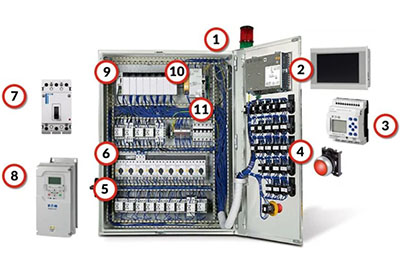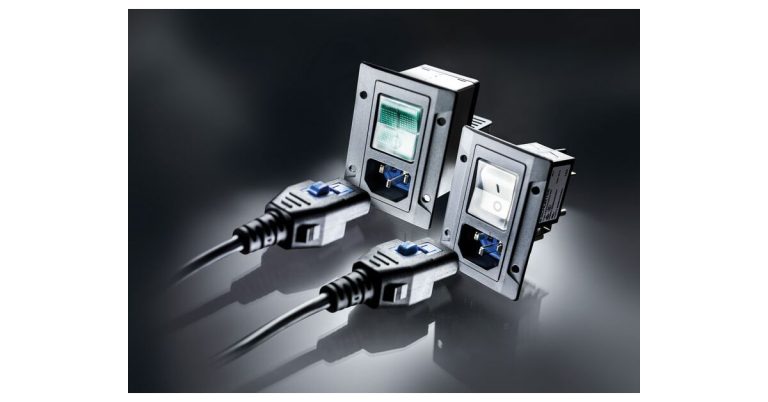Frequently Asked Questions about Arc Flash Versus SCCR

January 20, 2021
When an industrial control panel or industrial machinery does not have an adequate short-circuit current rating (SCCR) for the available short-circuit (fault) current, an electrical hazard exists. An industrial control panel that is not rated for the available fault current could result in extensive damage creating a dangerous situation for anybody working on or near the panel. In this case, the arc flash warning label should state “Danger,” and no one should be allowed to work on or near the panel when energized until the proper industrial control panel SCCR is achieved.
To help increase industrial control panel safety and learn more about how arc flash is different from SCCR, UL and Eaton’s Bussmann division experts teamed up to provide answers to the following frequently asked questions from the webinar, “Short-Circuit Current Rating Versus Arc Flash.”
1. It seems that overcurrent protective devices need to be checked for adequate interrupting ratings per the National Electrical Code (NEC) 110.9. However, doesn’t the NEC® also require you to check equipment for SCCR?
NEC 110.10 does require overcurrent protective devices to be selected to clear a fault without damage to the equipment. Equipment that is listed with SCCRs is intended to meet this requirement. However, the SCCRs marked on the listed equipment may not be sufficient to provide protection for the equipment when installing in the field. Verification that the equipment SCCR is adequate for the available fault current where the equipment is installed must be determined in the field. This is outside the responsibility of the manufacturer of the equipment and the listing agency.
2. Does a machine builder only need to provide an SCCR (not arc flash) rating since the machine builder may not know the details on the final installation service potential? If no, what is a machine builder responsible for regarding arc flash if they do not have final location service details?
Yes, machine builders are only required to provide an SCCR per the NEC. The customer or installer (the person responsible for connecting the machine to the facility power system) should provide the arc flash label and verify the SCCR of the machine is adequate for the available fault current.
3. The NEC requires the short-circuit current rating to be marked on the nameplate of equipment so that it is plainly visible. What is plainly visible?
Plainly visible is not defined in the NEC®. It requires applying common sense to determine if the intent of being plainly visible is met. Providing the SCCR on the outside of the enclosure or on the inside where the rating is immediately accessible without any modification of the equipment being necessary satisfies the intent of plainly visible.
4. What options exist if equipment such as an industrial control panel has an SCCR that’s less than the available fault current at the point in the electrical distribution system where it is connected?
The panel manufacturer can add current limiting protective devices in the feeder circuit of the panel to increase the SCCR of the panel. The process for doing this is covered in Supplement SB of UL 508A, the Standard for Industrial Control Panels. The current limiting protective devices may also be installed in the field upstream of the panel. However, their selection must meet the requirements of Supplement SB of UL 508A.
5. It seems that the NEC requires equipment to be marked to indicate the required personal protective equipment (PPE). However, it appears that some manufacturers are marking their equipment in the factory with an arc flash warning label. How is it possible to mark the required PPE if the label is applied in the factory as part of the manufacturing process?
NEC Section 110.16 only requires equipment to be marked to warn personnel of the potential for an arc flash hazard to exist. There is no requirement in the NEC® to mark on the label the required PPE or incident energy available at the equipment. Some manufacturers have chosen to refer to the factory-applied label to the National Fire Protection Association (NFPA) 70E standard to determine the appropriate PPE, but that information is optional.
6. How should a panel be labeled for arc flash if the SCCR is not sufficient for the available fault current?
If the panel SCCR is not equal to or higher than the available fault current, a danger label should be installed on the panel stating that no one should be allowed to work on or near the panel when energized, not the calculated arc flash label. The proper arc flash label can be applied when and only when the panel SCCR is corrected and is equal to or higher than the available fault current.
7. When completing the arc flash assessment, how do I know if the third party included the panel SCCR in the calculations?
When your facility completes an arc flash assessment, ask the responsible party if they considered the panel SCCR. If they have not, have them review the arc flash assessment taking into account the SCCR and identify overdutied panels. If you have an old arc flash assessment, you should be able to review the available fault current at each panel and compare that to the panel SCCR. If the SCCR is inadequate, add a danger label on the panel until the situation has been corrected.
8. How do you conduct the arc flash assessment and label panels properly?
Per the Occupational Safety and Health Administration (OSHA), the electrical equipment (new or existing) must have adequate SCCR and per NEC, industrial control panels must be marked with the SCCR. If they are not marked, you must determine the SCCR per the approved methods. Once the SCCR is determined, check to see if the SCCR is adequate for the available fault current. If the SCCR is adequate, then apply the arc flash assessment label. If it is not sufficient, increase the panel SCCR or reduce the available fault current. To increase the SCCR, use current-limiting fuses per the approved method. Once the SCCR is appropriate for the available fault current, then the arc flash label can be applied.
9. Can current-limiting fuses be used to increase the SCCR and reduce the available fault current at the same time?
Yes, current-limiting fuses installed in the feeder circuit to the panel/machine can increase a panel/machine SCCR as long as branch components have an SCCR above the let-through current of the fuse. However, current-limiting fuses are not allowed to increase the interrupting rating of a circuit breaker for fuses installed in a branch circuit. The current-limiting fuses can also reduce the available fault current to the panel/machine based on their let-through current. Current-limiting fuses can also reduce the arc flash/incident energy to the panel/machine.
![]()
https://www.ul.com/news/frequently-asked-questions-about-arc-flash-versus-sccr











